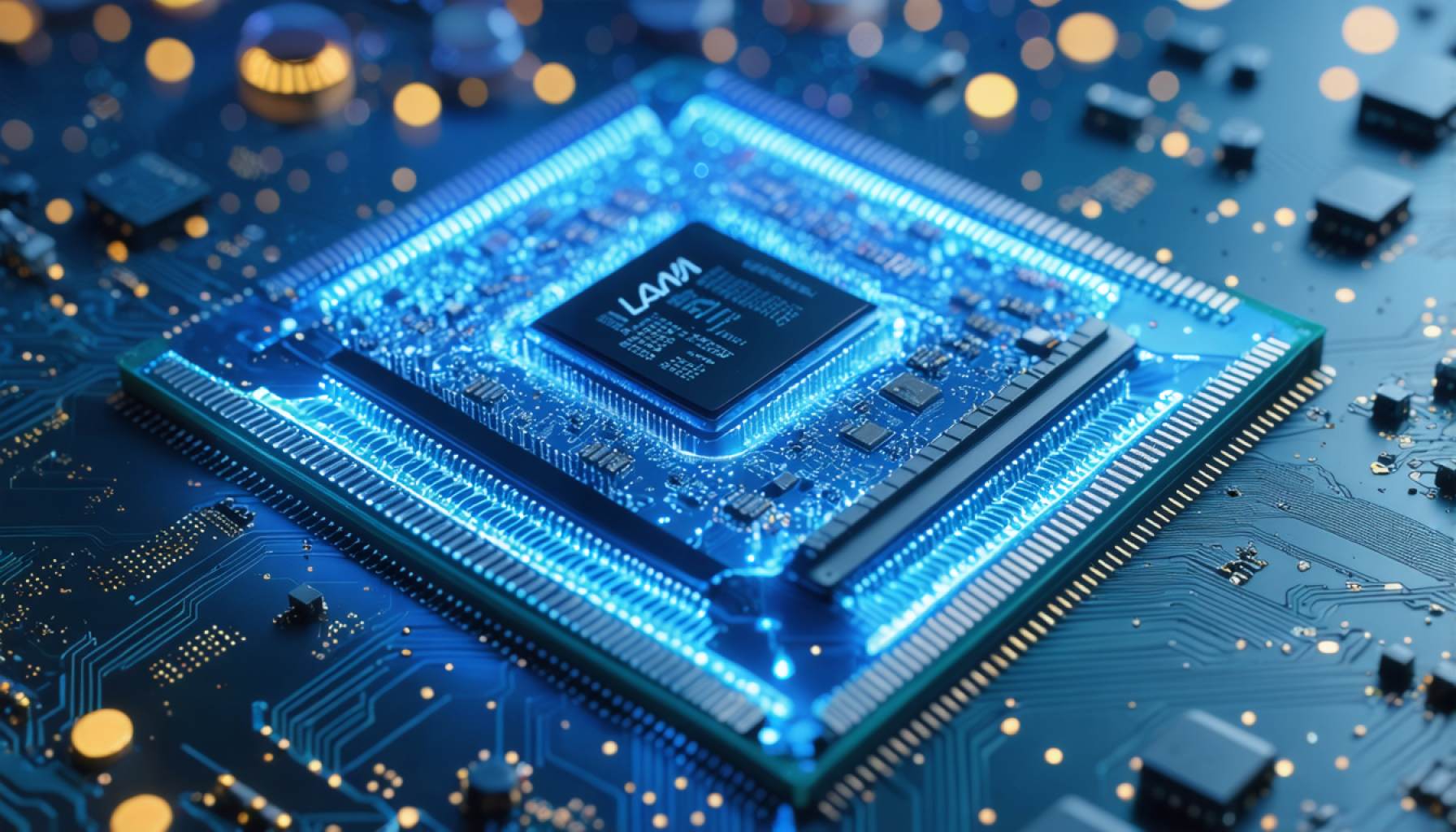- Lam Research Corp unveils Akara and ALTUS Halo, pioneering tools revolutionizing AI chip manufacturing.
- Akara specializes in precise plasma etching of 3D chip structures, essential for advanced transistors and memory technologies.
- ALTUS Halo uses atomic layer deposition to integrate molybdenum, ensuring low-resistivity connections vital for AI, cloud computing, and smart devices.
- Top semiconductor manufacturers have begun adopting these tools, marking significant industry transformation.
- Lam Research anticipates a revenue increase to $28 billion by 2028, with significant strategic investments on a global scale, including a $1.2 billion investment in India’s semiconductor sector.
- These innovations position Lam Research at the forefront of crafting the future of technology, unlocking AI’s full potential.
With a touch of innovation and a leap into the future, Lam Research Corp has pulled the curtain back on its latest marvels in AI chip manufacturing. Two revolutionary tools, Akara and ALTUS Halo, have emerged as key players in the intricate dance of modern chipmaking. Imagine these tools not just as machines but as artisans, carving and layering with the precision needed for tomorrow’s AI-centric world.
Akara, a plasma etch virtuoso, refines the art of crafting 3D chip structures. It adeptly handles the delicate etch processes required for cutting-edge transistors and advanced memory technologies. With Akara, scaling becomes an art form, enabling engineers to stack and etch layers as easily as flipping pages in a book, pushing the boundaries of AI chip capabilities.
Meanwhile, ALTUS Halo dazzles with its atomic layer finesse, championing molybdenum’s role in crafting next-gen semiconductors. Think of it as an artist, meticulously layering metals to create seamless, low-resistivity connections crucial for AI, cloud computing, and smart devices. Adoption is already underway among top manufacturers, signaling a wave of transformation.
Behind this technological spectacle lies a promising financial horizon. Lam Research’s optimistic projections foresee a revenue surge to $28 billion by 2028, with ambitions of remarkable margin growth and strategic reinvestment in global markets, including a colossal $1.2 billion commitment to India’s burgeoning semiconductor landscape.
In this unfolding narrative, the future gleams with the promise of efficiency, speed, and unprecedented capabilities. Lam Research isn’t just building tools—it’s sculpting the future of technology, enabling AI’s limitless potential to become today’s reality. Keep your eyes on this space; the revolution has only just begun.
Revolutionizing Chip Manufacturing: Inside Lam Research’s Innovative AI Tools
How-To Steps & Life Hacks
To leverage the full potential of AI-driven semiconductor tools like Akara and ALTUS Halo, chip manufacturers can implement a phased approach:
1. Assessment: Evaluate current manufacturing capabilities and identify areas for integration with Akara and ALTUS Halo.
2. Pilot Implementation: Introduce tools on a small scale to test compatibility and efficiency in existing production lines.
3. Training: Conduct thorough training sessions for engineers on new processes and equipment operation.
4. Optimization: Use real-time data analytics to continuously optimize processes and improve yields.
Real-World Use Cases
Businesses can benefit from these technologies in various ways:
– AI Chip Development: Akara enhances 3D chip structure designs, critical for advanced AI processors and neural networks.
– Consumer Electronics: ALTUS Halo’s molybdenum layers play a pivotal role in producing faster, more efficient devices.
– Data Centers: These tools enable the creation of semiconductors that support higher data processing rates, crucial for cloud computing.
Market Forecasts & Industry Trends
Lam Research’s push into AI chip manufacturing aligns with the industry’s projected growth:
– Market Size: The AI chip market is expected to reach $91 billion by 2025, fueled by rising demand for AI in various sectors (Source: Market Research Future).
– Trends: Companies are moving towards smaller, more powerful chips with lower power consumption, emphasizing the need for tools like Akara and ALTUS Halo.
Reviews & Comparisons
Industry leaders have shown a positive reception to Lam Research’s tools, citing increased precision and reduced material waste. Compared to traditional methods, these tools offer superior efficiency and scalability, essential for the fast-paced tech industry.
Controversies & Limitations
Despite their potential, these tools require significant initial investment and adaptation to existing manufacturing processes. Companies must balance these upfront costs against long-term benefits.
Features, Specs & Pricing
While specific pricing details are proprietary, key features include:
– Akara: Offers precision plasma etching for advanced 3D chip structures.
– ALTUS Halo: Provides atomic layer deposition with low resistivity, enhancing device performance.
Security & Sustainability
The use of environmentally friendly materials and processes in these tools enhances sustainability while maintaining high security standards against industrial espionage.
Insights & Predictions
As Lam Research expands its market presence, expect continued advancements in semiconductor technology, with AI tools becoming integral to chip manufacturing by the end of the decade.
Tutorials & Compatibility
Engineers interested in these tools can access introductory courses and tutorials offered by Lam Research. These resources focus on integrating Akara and ALTUS Halo with industry-standard protocols.
Pros & Cons Overview
Pros:
– Advanced precision and efficiency.
– Scalable integration into existing systems.
– Supports next-gen semiconductor development.
Cons:
– High initial investment.
– Requires process adjustments and training.
Actionable Recommendations
1. Early Adoption: Companies should explore early adoption to gain competitive advantages in AI chip production.
2. Continuous Learning: Regular training updates are vital to maximize tool utility.
3. Partnerships: Strategic partnerships with AI enterprises can accelerate technology deployment.
For further details on Lam Research’s strides in semiconductor manufacturing, visit Lam Research. Keep an eye on this space for the latest in AI chip innovations.









